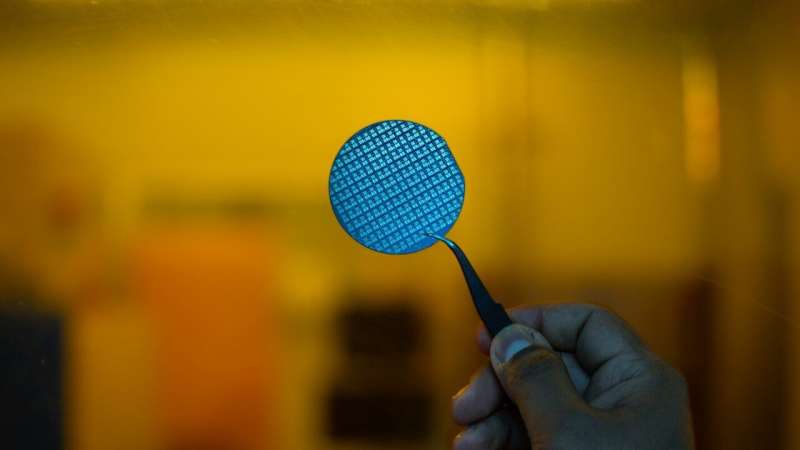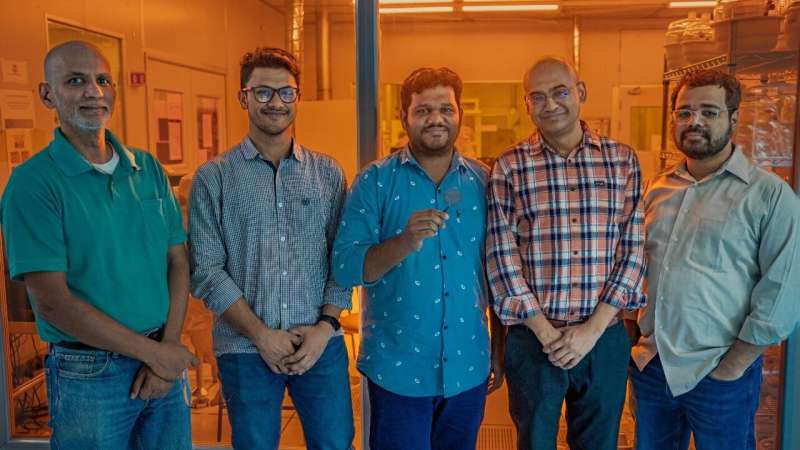This article has been reviewed according to Science X's editorial process and policies. Editors have highlighted the following attributes while ensuring the content's credibility:
fact-checked
trusted source
proofread
Indian research team develops fully indigenous gallium nitride power switch

Researchers at the Indian Institute of Science (IISc) have developed a fully indigenous gallium nitride (GaN) power switch that can have potential applications in systems like power converters for electric vehicles and laptops, as well as in wireless communications. The entire process of building the switch—from material growth to device fabrication to packaging—was developed in-house at the Center for Nano Science and Engineering (CeNSE), IISc.
Due to their high performance and efficiency, GaN transistors are poised to replace traditional silicon-based transistors as the building blocks in many electronic devices, such as ultrafast chargers for electric vehicles, phones and laptops, as well as space and military applications such as radar.
"It is a very promising and disruptive technology," says Digbijoy Nath, Associate Professor at CeNSE and corresponding author of the study published in Microelectronic Engineering. "But the material and devices are heavily import-restricted … We don't have gallium nitride wafer production capability at commercial scale in India yet." The know-how of manufacturing these devices is also a heavily-guarded secret with few studies published on the details of the processes involved, he adds.
Power switches are used to control the flow of power to—essentially turn on or off—electronic devices. To design the GaN power switch, the IISc team used a metal organic chemical vapor deposition technique developed and optimized over a decade by researchers in the lab of Srinivasan Raghavan, Professor and Chair, CeNSE. It involves growing GaN alloy crystals layer by layer on a two-inch silicon wafer to fabricate a multi-layered transistor.
The entire process needs to be carried out carefully in a clean room to ensure that no defects arise due to environmental conditions like humidity or temperature, which can affect device performance. The team also took the help of Kaushik Basu, Associate Professor in the Department of Electrical Engineering (EE), and his lab, to build an electrical circuit using these transistors and test their switching performance.

GaN transistors typically operate in what is called a "depletion mode"—they are on all the time unless a negative voltage is applied to turn them off. But power switches used in chargers and adapters need to work the other way around—they normally need to be off and not carrying current, and should only turn on when a positive voltage is applied ("enhancement mode"). To achieve this operation, the team combined the GaN transistor with a commercially available silicon transistor to keep the device normally off.
"The packaging of the device was also indigenously developed," explains Rijo Baby, Ph.D. student at CeNSE and first author of the study. After packaging and testing, the team found the device performance to be comparable to state-of-the-art switches available commercially, with a switching time of about 50 nanoseconds between on and off operations.
Going forward, the researchers plan on scaling up the device dimensions so that it can operate at high currents. They also plan to design a power converter that can step up or step down voltages.
"If you look at strategic organizations in India, they have a hard time procuring GaN transistors … It is impossible to import them beyond a certain quantity or power/frequency rating," says Nath. "This is essentially a demonstration of indigenous GaN technology development."
More information: Rijo Baby et al, 8 A, 200 V normally-off cascode GaN-on-Si HEMT: From epitaxy to double pulse testing, Microelectronic Engineering (2023). DOI: 10.1016/j.mee.2023.112085




















